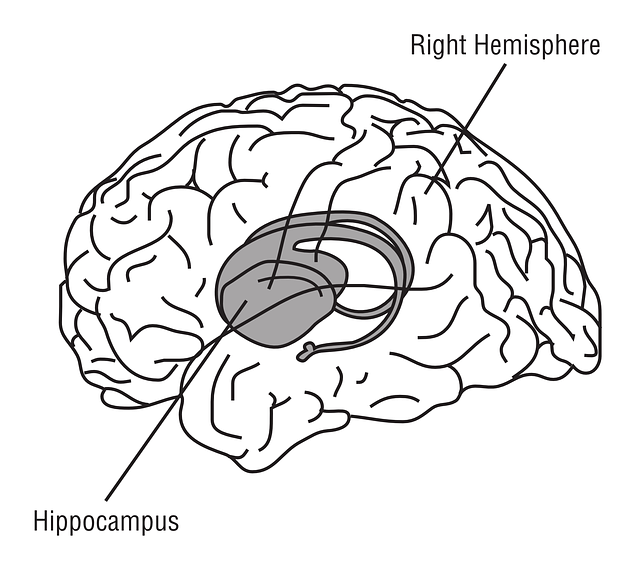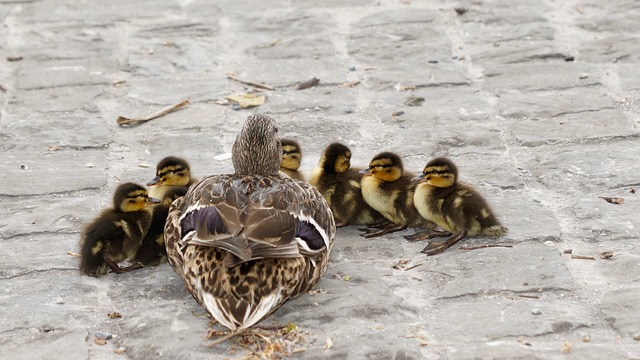Learning
Article curated by Ginny Smith
From the moment we are born, we begin to learn about the world around us, and this continues for the rest of our lives. But exactly how does this happen in the brain? How does learning change throughout out lives? And do other animals learn in the same way we do? These questions are still open, and scientists are working hard to find out the answers.

Learning in the brain
When we learn, our brains change, with some pathways becoming stronger and others weakening. This ability to change is known as plasticity, and the ease with which it happens varies throughout our lives. When we are young, our brains are more plastic to enable us to learn rapidly but as we age, efficiency and stability become more important and our brains become less flexible. However, we don't know exactly what causes these changes, or why they happen at different times for different abilities. If it were possible to reverse changes, and put the adult brain back into 'learning mode', this could be hugely beneficial, not just for general learning (who hasn't wished they could pick up a second or third language as easily as a child can?!) but also for anyone who has suffered a stroke or another form of brain damage.
Learn more about Rewiring the Brain.


 3
3
In order to enter long term storage, memories must be consolidated. This process begins within minutes of learning, but continues for up to a few weeks. Exactly what is happening in this process isn’t fully understood, but scientists for many years thought that the hippocampus repeatedly activates regions of the cortex, strengthening the connections there and effectively transferring the memory from the hippocampus to the cortex, where it can be stored permanently. However, a recent study in mice suggests that the hippocampal memory and the cortex version are created at the same time, but that the cortical memory isn't used for the first few days after it is formed - the memory is 'immature' or 'silent'. If connection between the hippocampus and cortex are blocked, the memory can never mature.
This fits with the fact that if the hippocampus is damaged, the ability to store long term memories can be completely wiped out, as seen in famous patient HM.
Learn more about Memory in the brain.


 2
2
Despite not knowing exactly how it works, it seems humans are getting better at learning, and more intelligent, although there may be more to this finding that meets the eye.
IQ tests are designed such that the population average is always 100; but it has only been possible to maintain this by making the tests harder. Without this, results would have been increasing steadily - by about 1 point every 3 years. That may not sound much, but it would mean half of the world population from the time of WW1 would be classed as "mentally disabled" by modern standards. Clearly, something must be wrong.
Various theories exist, but nothing is conclusive. Could it be education? On average, we stay in school longer, so perhaps this has helped boost our IQ. Maybe we are taught in a different way - less rote learning and more abstract thinking, which makes us better suited to the IQ tests than our parents and grandparents. Or it could be that we aren't actually any more intelligent, just better at (and more used to) sitting exams. Another idea is that better nutrition is responsible for the rise. Pre-natal nutrition affects birth weight, and birth weight is correlated to higher IQs. One study also found that iodine defficiency in pregnant mothers is linked to lower IQ scores in their children.
James Flynn, who the effect is named after, doesn't think we are inherently more intelligent than our ancestors. It's like a weightlifter and swimmer. They may have the same muscles when they were fertilised in the womb, but they would have different muscles at autopsy, wouldn't they?
He said, in an interview with the BBC So today at autopsy, certain portions of our brain, for example those which use logic and abstraction, would have been exercised more and look differently. Other portions of the brain would have shrivelled a bit.

Learning through the lifespan

From the moment they are born, babies start learning about the world around them. But how can we find out what they know? Most psychological studies involve instructions, questions and answers. But you can’t ask a newborn baby to press a button, answer a question or rate something on a scale.
One thing many new born babies can do, and enjoy doing, is looking at things. So scientists use this fact - one common way of finding out what babies like is to give them two options and see which one they choose to look at. Using this technique, we now know that babies are born with a preference for faces. Even just a few hours after birth, they will choose to look at a face, or something that resembles a face, over almost any other stimuli.
There is still debate over whether babies are innately drawn specifically to faces, or whether they are drawn to various low-level properties that faces have, such as high contrast and top-heavy arrangements. Whatever it is that we are born with that makes us like to look at faces, over our first few months, we start to become experts in recognising and categorising them, and this process continues throughout our lives.


These looking time experiments can be taken one step further. If you show a baby the same image, over and over again, they will get bored and stop looking at it. If you then show them something new, they will look longer again. This can be used to work out what they can discriminate. If, for example, they get bored of a red square, but look longer at a red circle, you know they can tell squares are different from circles. If a green square continued to bore them, you would know they couldn’t tell apart red and green.
Some scientists believe this technique can be used to understand infants' conceptual knowledge. If, for example, they look longer at an impossible event, like an object teleporting, they are said to be surprised by that event, and therefore understand that it is impossible. So all sorts of claims for the ‘folk physics’ we are born with have been made.
Research suggests babies understand physical concepts including: solidity (they are surprised when an object is able to pass through another object), occlusion (that objects don't disappear when they are blocked from view) and containment (a big object can't fit into a smaller one).
Of course, there are all sorts of concerns about the validity of this method, and it has led to some strange finding, with babies ‘understanding’ concepts that children don’t seem to grasp until much later when you ask them directly. For example, babies won't reach for a hidden object until 8 months, which was put down to them not realising it still exists, but looking time experiments suggest this isn't the case. So why don't they reach? More research is needed before we can fully understand the contents of a baby's brain.



Learn more about whether humans have critical periods for learning.


 2
2
As they grow up, it becomes a little easier to work out what children have learnt about the world they live in. One ability that takes a while to grasp is understanding how other people think and feel - this is known as Theory of Mind (ToM). Typically, children can pass ToM tests around the age of 4-5. The most common is the Sally-Ann test, which is usually acted out for the child using puppets. The story goes: Sally & Ann are friends. Sally has a marble - she puts in in her box then leaves the room. Ann comes in & moves the marble from the box to the basket. She leaves. Sally comes back in, and wants her marble. Where does she look? Young children will say she looks in the basket, while older children can understand her false belief - that she thinks it is in the box. But how this understanding develops isn't known. Is it simply that 4-5 years of learning are needed to grasp ToM? Or is there something in the brain that changes to allow this ability to develop? It’s the age old question; nature or nurture. And the answer is that we don’t know for sure - and there is no ethical way to find out, because we can’t keep a child in isolation for 5 years to see if their brain differs from other children's. Another complicating factor is that looking time tasks have shown infants are surprised when Sally looks in the wrong place (where the marble is rather than where she left it) at less than 2 years of age! So could it be that they 'know', on some level at least, where she would look, but can't articulate it? It could be that rather than ToM developing, it's inhibition - when they are under 4 they can't inhibit their own knowledge well enough to give the right answer. Another complication is that the pass age changes depending on the difficulty of the test. At around 2 years children can understand intentions, and when something is done by accident rather than on purpose. Conversely the ability to recognise a social faux-pas that could cause embarrassment doesn't develop until around the age of 9. Also, young children fail on similar tasks which don't involve a false belief - for example saying where an object was when a photo was taken of the scene, when it has been moved since. All this means we are a long way from understanding exactly when and how children become able to see other people as agents with their own minds, beliefs and desires.



Learn more about why do we play?.


 2
2Like them or loathe them, play for many children now includes video games. But what impact is this having on their cognitive and social development? Recent studies have seemed to give conflicting results. One study in Oxford showed that up to an hour of gaming a day actually had some benefits for a child, and it is only when play time exceeds 3 hours that any negatives are seen. So why might this be true? Some games have difficult tasks where you have to think, react quickly and remember information - this could be working as a sort of ‘brain training’ exercise, actually improving children’s concentration and problem solving abilities. However whether this would carry over into other aspects of life is still controversial (see below). It seems clear that a moderate amount of gaming won't harm most children - too much of it, however, and you are eating into time to play outdoors, see friends and read - all things that are important for cognitive development. So everything in moderation is probably the best tactic.


If playing video games can actually help cognitive development, surely games actually designed for the purpose would be even better? If you could improve your memory, attention and reaction time just by playing a few simple games for 15 minutes a day, wouldn’t you want to? Well that is what the huge number of brain training games on the market are offering… but it seems their claims might be too good to be true. Since they rose to popularity, the scientific community has been divided on whether these activities can improve general cognitive functioning. It seems to make sense. We know that the brain can change, and connections between neurons are strengthened with repeated use. And there are dozens of studies carried out that seem to show the benefits of brain training games. But a recent review, published in the journal ‘Psychological Science in the Public Interest’, suggests the evidence for their benefit is weak - too weak to back up the claims companies make. The researchers analysed 374 studies of brain training - which made up all the evidence cited by the leading brain training companies. They found that the majority of studies didn’t measure up to the ‘best practice’ they had defined - they just weren’t good science! The problems found ranged from small sample sizes to a lack of control group or baseline analysis,to compare the post-training results to. Without this, any findings are meaningless. Many studies also failed to account for the placebo effect - if you are told that playing a game will make you better at something, you may get better at it just because you expect to, with no help from the game at all. With all these problems, most of the studies just can’t be relied upon as support for brain training’s effectiveness. There were, however, a few good studies amongst those reviewed. But even these don’t really show that brain training is helpful in improving brain function. Proponents often liken the brain to a muscle, and say that by exercising it, like we do a muscle, we can keep it working well. But this is where the problem arises, because the brain is not quite like a muscle. If you start lifting weights at the gym, working on your upper body strength, you can rightly expect this exercise to provide benefits in your everyday life - making it easier for you to carry heavy shopping bags or helping you to swim faster. But imagine if that didn’t happen. All the work you put in at the gym meant you were able to lift heavier and heavier dumbbells while you were there, but when you tried to lift something different, or use the muscle in another way, it hadn’t helped a bit. You would rightly be pretty annoyed, and feel like the time and money spent on your gym trips would have been better used elsewhere! This is what seems to be happening with brain training games. People who use them do become better at the specific games they are practising, but this doesn’t carry over into everyday life. So if brain training games don’t help keep you sharp, is there anything you can do to ensure your brain stays healthy? Luckily, the answer is yes - and it’s free! There is a lot of evidence that physical exercise has benefits for the brain as well as the body, as does a healthy diet and an active social life. So if you want to stave off the declines of aging, you may be best off putting down the computer games, and finding someone to go on a nice walk with instead.


The brain changes a lot throughout childhood, with new connections being formed and unnecessary ones being 'pruned' away to make the brain more efficient. But this process doesn't stop once you reach adolescence - some regions, like the cortex, are still undergoing changes into the early 20s. This leads to a strange mix of mature and immature abilities; teens emotional brain regions are similar to adults (or even more reactive) and the pleasure-seeking parts of their brains are well connected but their inhibition mechanisms and impulse control are under-developed. This may help explain some of the common teenage behaviour like risk taking and mood swings. Brain scanning studies have also shown that during certain tasks teens and adults use different brain regions, possibly requiring more effort. But why is this? Is it just that some regions of the brain take longer to fully mature? Or could this delayed development actually have evolutionary benefits? During their teenage years, young people need to break away from their parents, explore the world and meet new people - and being more impulsive and open to risks may just help them do this. However it is almost impossible to prove that teenagers are an evolutionary advantage and not just a byproduct of our big, flexible brains.



Boost your learning


Animal Learning
The ability to learn can help animals survive in a variety of different environments. One of the simplest animals to show learning is slime mould. These amazing creatures can be acellular: containing multiple nuclei inside one cell, like an amoeba. As they grow, they spread out in all directions before retracting the branches that don't find food and strengthening those that do. This allows them to 'learn' where food is, and even to map the most efficient route through a maze, or recreate the Tokyo subway! Even more amazingly, slime moulds can learn to anticipate events. In one study researchers blasted them with cold air at regular intervals, slowing their growth. After a while, they began to slow down just before the time when the next blast of air should be administered! They don't have anything resembling a brain, so nothing in the mould should be able to store a memory, meaning the mystery remains; how do they learn?

This article was written by the Things We Don’t Know editorial team, with contributions from Ed Trollope, Ginny Smith, and Cait Percy.
This article was first published on 2017-06-02 and was last updated on 2018-03-17.
References
why don’t all references have links?
Vogel, G., (2012) Can We Make Our Brains More Plastic? Science 338(6103):36-39 DOI: 10.1126/science.338.6103.36
Miller, G., (2012) How Are Memories Retrieved? Science 338(6103):30-31 DOI: 10.1126/science.338.6103.30-b
Simons, D,J., et al., (2016) Do "Brain-Training" Programs Work? Psychological Science in the Public Interest 17(3):103-186 DOI: 10.1177/1529100616661983
Recent learning News
Get customised news updates on your homepage by subscribing to articles












